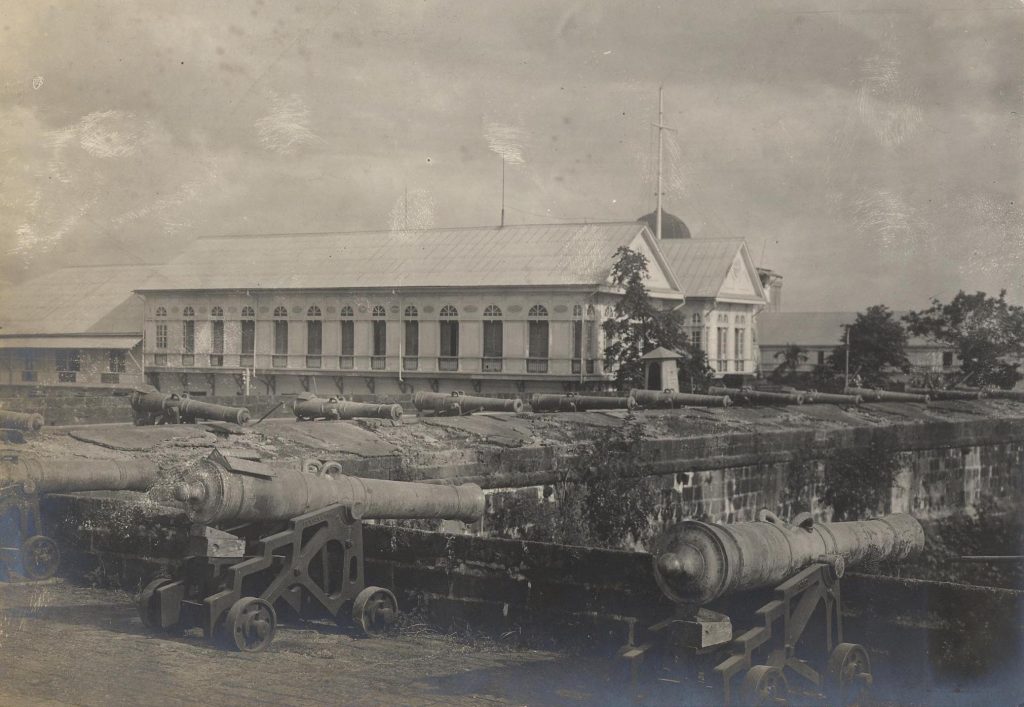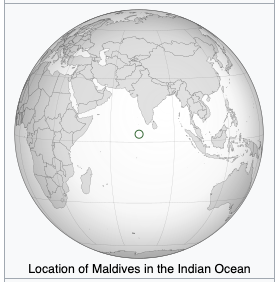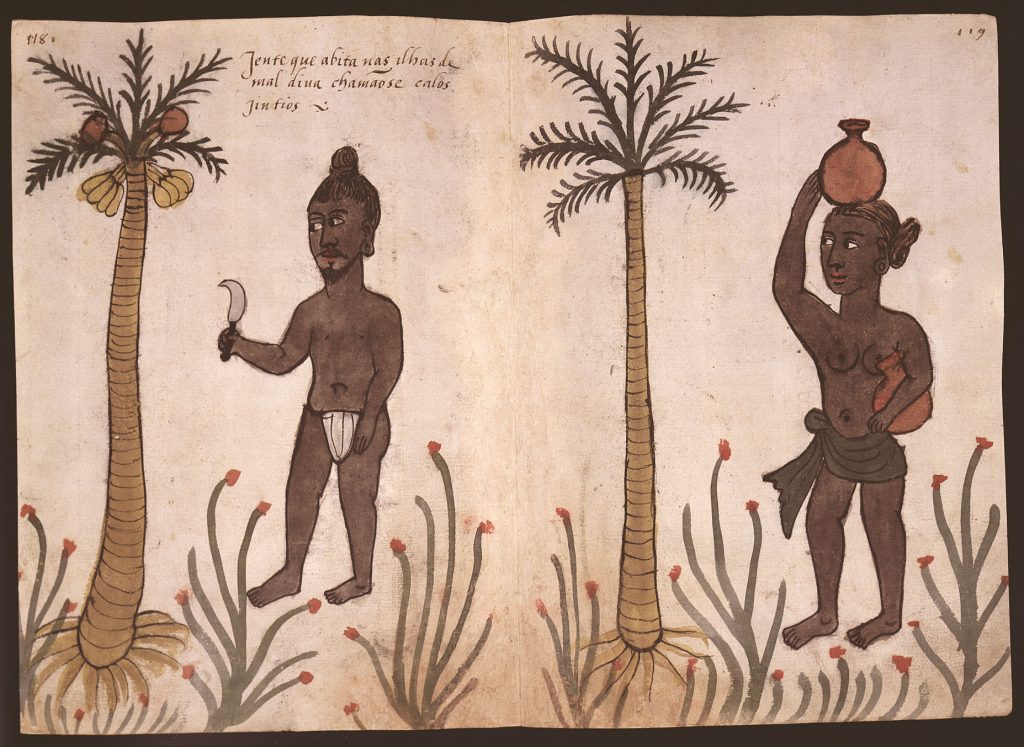Here they are:
- Akbar takes Gujarat for the Mughals
- Spanish ship full of S. American silver reaches Manila
- Ottomans and Venetians conclude peace treaty
- Maldivian nationalists expel Portuguese
- Wars of religion (still) in France and Netherlands; News of women’s role in defense of Haarlem
- Spanish conquistadors establish new cities in today’s Peru, Argentina
Akbar takes Gujarat for the Mughals
Five years ago, the Mughal Emperor Akbar had captured Chittorgarh and the rest of the Rajput area. From there, he was determined to extend to the trade routes on both the Arabian Sea and the Bay of Bengal. First, Gujarat, on the Arabian Sea. English-WP tells us that in 1572 he had occupied the Gujarat capital of Ahmedabad, the capital, and other northern cities, and was proclaimed (or proclaimed himself?) the lawful sovereign of Gujarat. “By 1573, he had driven out the Mirzas who, after offering token resistance, fled for refuge in the Deccan. Surat, the commercial capital of the region and other coastal cities soon capitulated to the Mughals.”
Having established his authority over Gujarat, Akbar returned to his capital in the Rajputana, Fatehpur Sikiri, but various rebellions and intrigues forced his return to Gujarat.
Akbar crossed the Rajputana and reached Ahmedabad in eleven days – a journey that normally took six weeks. The outnumbered Mughal army then won a decisive victory on 2 September 1573. Akbar slew the rebel leaders and erected a tower out of their severed heads. The conquest and subjugation of Gujarat proved highly profitable for the Mughals; the territory yielded a revenue of more than five million rupees annually to Akbar’s treasury, after expenses.
As we have seen previously, the ports of Gujarat were well connected to global trading systems, so this was great for Akbar.
Spanish ship full of S. American silver reaches Manila

In 1573, the first Spanish galleon, laden with silver to trade for the porcelain and silk of Ming China, landed at Manila in the Philippines. This marked the beginning of the Spanish silver trade to China, that would come to trump that of the Portuguese, who had mainly been sourcing their silver for the Chinese market from from the mines in Japan. From here on, most of the silver entering China would come from what is now Mexico, Bolivia, and Peru.
This page on WP tells us:
From 1565 to 1821, the Philippines was governed as part of the Mexico-based Viceroyalty of New Spain, later administered from Madrid following the Mexican War of Independence. Manila was the western hub of the trans-Pacific trade.[66] Manila galleons were constructed in Bicol and Cavite.
During its rule, Spain quelled various indigenous revolts… Administration of the Philippine islands [was] considered a drain on the economy of Spain, and there were debates about abandoning it or trading it for some other territory. However, this was opposed for a number of reasons, including economic potential, security, and the desire to continue religious conversion in the islands and the surrounding region. The Philippines survived on an annual subsidy provided by the Spanish Crown, which averaged 250,000 pesos and was usually paid through the provision of 75 tons of silver bullion being sent from the Americas.
Ottomans and Venetians conclude peace treaty
In 1571, the Pope-brokered coalition of Christian forces had defeated the Ottoman navy at Lepanto. But as noted earlier, soon after, that “Holy League” Christian alliance soon thereafter began to unravel, and in 1573 it failed to sail altogether. Venice was unable on its own to regain Cyprus and now also feared the loss to the Ottomans of some of its mainland possessions such as Dalmatia or even close-to-home Friuli. Being ruled by a confederation of merchants, Venice also wanted to resume its lucrative trading operations with the Ottomans.
So they sent an ambassador to start nailing down the terms of a peace treaty with the Sublime Porte. English-WP:
[T]he resulting treaty, signed on 7 March 1573, confirmed the new state of affairs: Cyprus became an Ottoman province, and Venice paid an indemnity of 300,000 ducats [to the Ottomans.] In addition, the border between the two powers in Dalmatia was modified by the Turkish occupation of small but important parts of the hinterland that included the most fertile agricultural areas near the cities, with adverse effects on the economy of the Venetian cities in Dalmatia.
Peace would continue between the two states until 1645, when a long war over Crete would break out. Cyprus itself remained under Ottoman rule until 1878.
Maldivian nationalists expel Portuguese

In 1558 CE, the Goa-based Viceroy of Portuguese India (!) established a small garrison with a trading post in the Maldives. As always, the Portuguese were intent on converting the indigenous people, who had long been Muslim. Their first convert– and the only member of the Maldivian royalty to convert– had been Sultan Hassan IX, who upon conversion was deposed, fled to Goa, and took the name “Dom Manoel.”
The brutality of Portuguese rule of the Maldives spurred three brothers, the sons of a khatib (Muslim preacher) to leave the Maldives to plan for a rebellion. They were Muhammad Thakurufaanu al-A’uẓam and his brothers Ali and Hasan. They went to an island in the Laccadive Archipelago, off the coast of India, where they built the ship Kalhuoffummi, which they used to sail from island to island, to gin up support on their way back to the Maldives’ capital island Malé.

WP tells us they reached Malé the night before the day fixed by the Portuguese garrison for the forcible conversion of the inhabitants to Christianity, “on the penalty of death for non-compliance.” The brothers, “along with other Maldivians who were determined to die for their country and faith, slew the whole Portuguese garrison and gained independence for the country from its invaders.”

After that victory, Muhammad Thakurufaanu had to deal with some complicated diplomacy, juggling the competing demands of various powers in India and of Dom Manoel (whose regent he had personally killed in Malé. Anyway, he died a natural death 15 years later and the date of his victory over the Portuguese is celebrated as Maldivian National Day until today.
Wars of religion (still) in France and Netherlands; News of women’s role in defense of Haarlem
So in 1573, the Wars of Religion (yawn!) continued in both France and Netherlands. These were always primarily religious/sectarian conflicts, though with an often heavy “regional” overlay– which was particularly pronounced in Netherlands since the opposition to the predominantly Spanish-Catholic Habsburg status-quo power there had a heavily localist (Netherlandish) as well as Protestant tinge to it.
And in 1573, we learn of the death of 18-year-old Maria van Schooten, who died from injuries she received after having participated in the defense of the city of Haarlem when the Spanish were besieging and capturing it. The Siege of Haarlem lasted from December 1572 through July 1573, when finally the city’s defenders had to surrender.
The WP page on Maria van Schooten tells us she “was given a public funeral with full military honors” and was “believed to have been one of the women led by Kenau Simonsdochter Hasselaer, a legendary heroine who helped defend Haarlem against the Spanish invaders.”

As for Kenau Simonsdochter Hasselaer herself, we learn that she’d been born in 1526 and was a wood merchant. And this:
When the city was besieged by the Spanish, period diarists reported that all of the townspeople, man, woman, and child, fearlessly helped to rebuild the city defenses that had been destroyed by enemy cannon. One account written in Latin from Delft, mentioned Kenau by name as an unusually fearless woman who worked night and day carrying earth to the city walls to rebuild the defense line.
This (anonymous) account mentioned in the next paragraph how the people of Haarlem stood on these earthworks and threw burning tar wreaths around the necks of the enemy, and described how one Spanish soldier jumped into the river Spaarne to douse the flames only to drown from the weight of his armor. Somehow the story arose that it was Kenau who threw these ‘tar wreaths’. Kenau’s role as an earth carrier was soon glorified into a full-fledged soldier who was honored at the centennial celebrations of independence from Spain in 1673 and again during the bicentenary in 1773…
As noted there, the role that Kenau Hasselaar and her companeras played in the defense of Haarlem came to be mythologized over the decades that followed. The banner image at the top above, painted by an anonymous painter around the end of the 16th century, hangs in the Rijksmuseum in Amsterdam, where the online info page tells us that “In Dutch parlance, a ‘kenau’ is a woman who is not afraid of anything or anyone.”
Spanish conquistadors establish new cities in today’s Peru, Argentina
And lest we forget, that great motor of Western imperialism, Spain’s massive necklace of brutal settler-colonial projects in the Americas, continued apace. 1573 saw the establishment of the settlements of Córdoba and Santa Fe in today’s Argentina. Both those settler-cities are deep in the interior of the continent.
Córdoba is described as having been part of the “Spanish Viceroyalty of Peru.” I guess I hadn’t realized till now that nearly all of Spain’s conquests in South America were administered out of Lima, Peru until 1718. The Viceroyalty had been established there in 1542.
